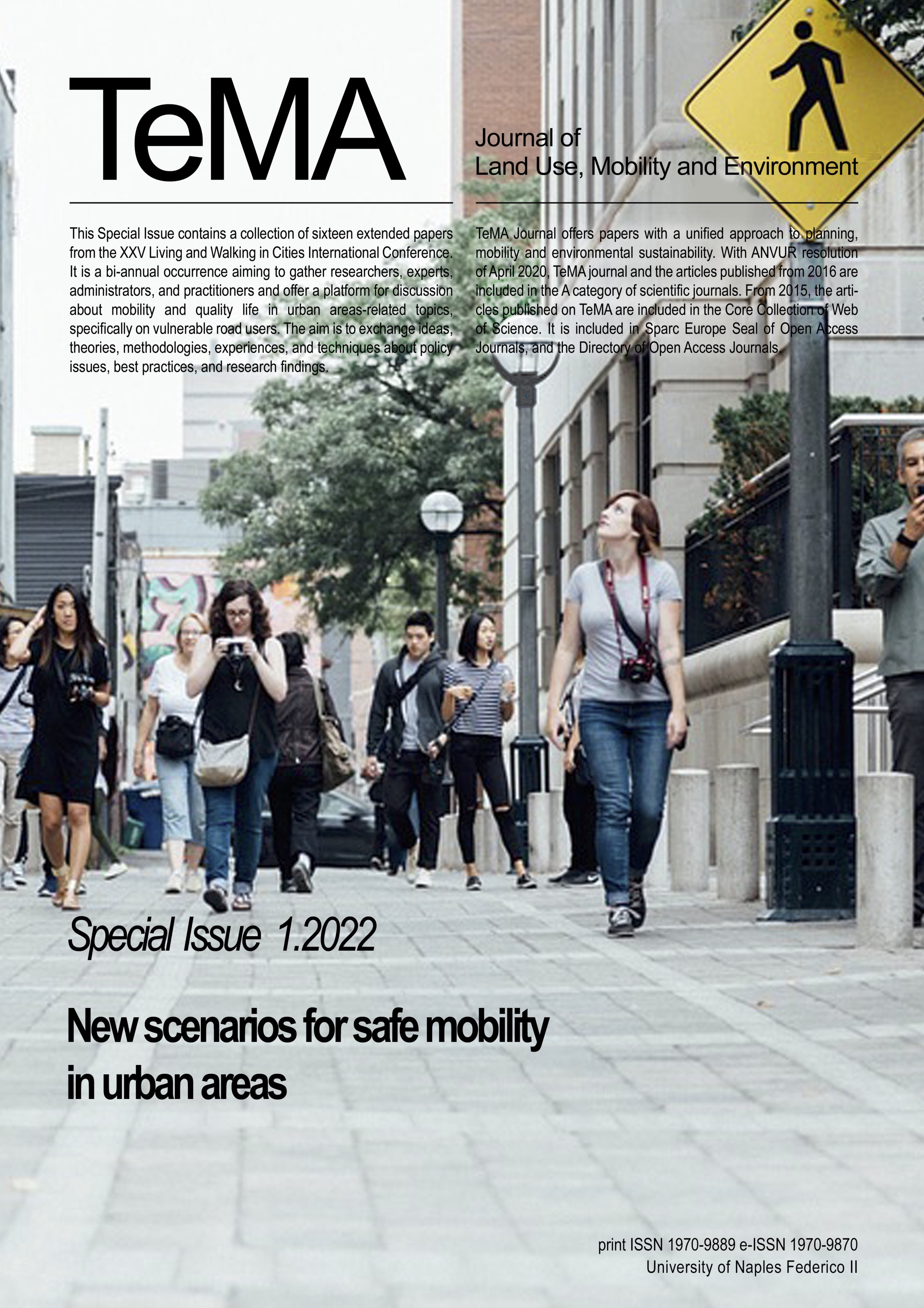Enhancing driver visibility at night: an advanced glass-powder paint technology approach
Abstract
Driving in low visibility regions, especially at night along a transportation facility, can be particularly dangerous. Related issues include reduced illumination leading to reducing visibility and the objects fading away into obscure darkness. In such situations, albeit some drivers suffer from deficiency (including nearsightedness and cataracts), poor visibility due to road markings becoming blur could result in several problems, including damaged night vision. This study aims at addressing these issues by providing alternative measures to improve driver visibility at night using innovative glass-powder paint technology (GPPT). An introduced driveway section located at Eastern Cape Province-South Africa is selected as reference application to compare the proposed road marking paint in the current research against the conventional one. This was conducted via a developed, grouped multinomial logistics and non-parametric, quantitative analysis model in quantum flow theory. In this study, results revealed that based on a 95% confidence level assumed equivalent to 0.05 significance level, the null hypothesis was rejected, proving that driving behaviour at night on the test section is significantly improved with the introduction of the innovative GPPT. Hence, the enhanced illumination index obtained and reduction in the blur level on the road markings indicate improved glare and night illumination.
Downloads
References
Abejide, O. S., Adedeji, J. A., & Mostafa Hassan, M. (2018). Intelligent transportation system as an effective remedy to improve the public transportation in South Africa. https://repository.up.ac.za/handle/2263/69576
Agrawal, M. (2008). Quantum Field Theory (QFT) and Quantum Optics (QED). In Fundamental Physics in Nano-Structured Materials and Devices. Stanford University. http://www.stanford.edu/~mukul/tutorials
Baker, R. G. V. (1999). On the quantum mechanics of optic flow and its application to driving in uncertain environments. Transportation Research Part F: Traffic Psychology and Behaviour, 2(1), 27–53. https://doi.org/10.1016/S1369-8478(99)00005-4
Bartmann, A., Spijkers, W., & Hess, M. (1991). Street environment, driving speed and field of version. In A. G. Gale, I. D. Brown, C. M. Haslegrave, I. Moorhead, & S. P. Taylor (Eds.), Vision in Vehicles III (pp. 381–389). Northwestern University.
CM, M., & EL, F. (2008). Safety effects of reducing freeway illumination for energy conservation. Accident; Analysis and Prevention, 40(5), 1773–1780. https://doi.org/10.1016/J.AAP.2008.06.018
Dingus, T. A., Guo, F., Lee, S., Antin, J. F., Perez, M., Buchanan-King, M., & Hankey, J. (2016). Driver crash risk factors and prevalence evaluation using naturalistic driving data. Proceedings of the National Academy of Sciences, 113(10), 2636–2641. https://doi.org/10.1073/PNAS.1513271113
DN, L. (1980). The optic flow field: the foundation of vision. Philosophical Transactions of the Royal Society of London. Series B, Biological Sciences, 290(1038), 169–179. https://doi.org/10.1098/RSTB.1980.0089
Ezell, S. (2010). Explaining International IT Application Leadership: Intelligent Transport Systems.
Florida Department of Transportation. (2007). Median Handbook.
Gibson, J. (1966). The senses considered as a perceptual system.
Gillwald, A., Moyo, M., & Stork, C. (2012). Understanding what is happening in ICT in South Africa: a supply- and demand-side analysis of the ICT sector.
Hoel, L. A., Garber, N. J., & Sadek, A. W. (2008). Transportation infrastructure engineering : a multi-modal integration. 674.
Hounsell, N. B., Shrestha, B. P., Piao, J., & McDonald, M. (2009). Review of urban traffic management and the impacts of new vehicle technologies. IET Intelligent Transport Systems, 3(4), 419–428. https://doi.org/10.1049/IET-ITS.2009.0046
Hu, X., Chiu, Y.-C., & Shelton, J. (2016). Development of a behaviorally induced system optimal travel demand management system. Http://Dx.Doi.Org/10.1080/15472450.2016.1171151, 21(1), 12–25. https://doi.org/10.1080/15472450.2016.1171151
Jacob, B., & Violette, E. (2012). Vehicle Trajectory Analysis: An Advanced Tool for Road Safety. Procedia - Social and Behavioral Sciences, 48, 1805–1814. https://doi.org/10.1016/J.SBSPRO.2012.06.1155
Kinderyte‐Poškiene, J., & Sokolovskij, E. (2010). Traffic control elements influence on accidents, mobility and the environment. Vilnius Gediminas Technical University, 23(1), 55–58. https://doi.org/10.3846/1648-4142.2008.23.55-58
Miura, T. (1987). Behavior Oriented Vision: Functional Field of View and Processing Resources. Eye Movements from Physiology to Cognition, 563–572. https://doi.org/10.1016/B978-0-444-70113-8.50080-1
NHTSA. (2008). US Department of Transportation National Highway Traffic Organisation. https://crashstats.nhtsa.dot.gov/Api/Public/ViewPublication/811059
Nunes, A., Galvão, T., & Cunha, J. (2014). Urban Public Transport Service Co-creation: Leveraging Passenger's Knowledge to Enhance Travel 121 Experience. Procedia - Social and Behavioural Sciences, 111. OECD (2010) Cities and Green Growth: Issues Paper for the 3rd Annual Meeting of the OECD Urban Roundtable of Mayors and Ministers, 25 May, 2010, 577–585.
Pincus, P. (2014). Statistics 1. T-Test Review. Agriculture innovation program. USAID et al. https://epakag.ucdavis.edu/media/vocational/man-stats-t-test.pdf
Rea, M., Bullough, J., & Zhou, Y. (2010). A method for assessing the visibility benefits of roadway lighting: Http://Dx.Doi.Org/10.1177/1477153509360855, 42(2), 215–241. https://doi.org/10.1177/1477153509360855
RW, M., & HE, R. (1983). Optic-flow and cognitive factors in time-to-collision estimates. Perception, 12(4), 417–423. https://doi.org/10.1068/P120417
Sheu, J.-B. (2013). Characterisation of driver behaviour during car following using quantum optical flow theory. Http://Dx.Doi.Org/10.1080/18128602.2011.572571, 9(3), 269–298. https://doi.org/10.1080/18128602.2011.572571
WHO. (2005). World report on road traffic injury prevention: summary. https://www.who.int/publications/i/item/world-report-on-road-traffic-injury-prevention
Yin, K. (2014). Case Study Research Design and Methods. SAGE Publications.
Copyright (c) 2022 TeMA - Journal of Land Use, Mobility and Environment

This work is licensed under a Creative Commons Attribution 4.0 International License.
Authors who publish in this journal agree to the following:
1. Authors retain the rights to their work and give in to the journal the right of first publication of the work simultaneously licensed under a Creative Commons License - Attribution that allows others to share the work indicating the authorship and the initial publication in this journal.
2. Authors can adhere to other agreements of non-exclusive license for the distribution of the published version of the work (ex. To deposit it in an institutional repository or to publish it in a monography), provided to indicate that the document was first published in this journal.
3. Authors can distribute their work online (ex. In institutional repositories or in their website) prior to and during the submission process, as it can lead to productive exchanges and it can increase the quotations of the published work (See The Effect of Open Access)

